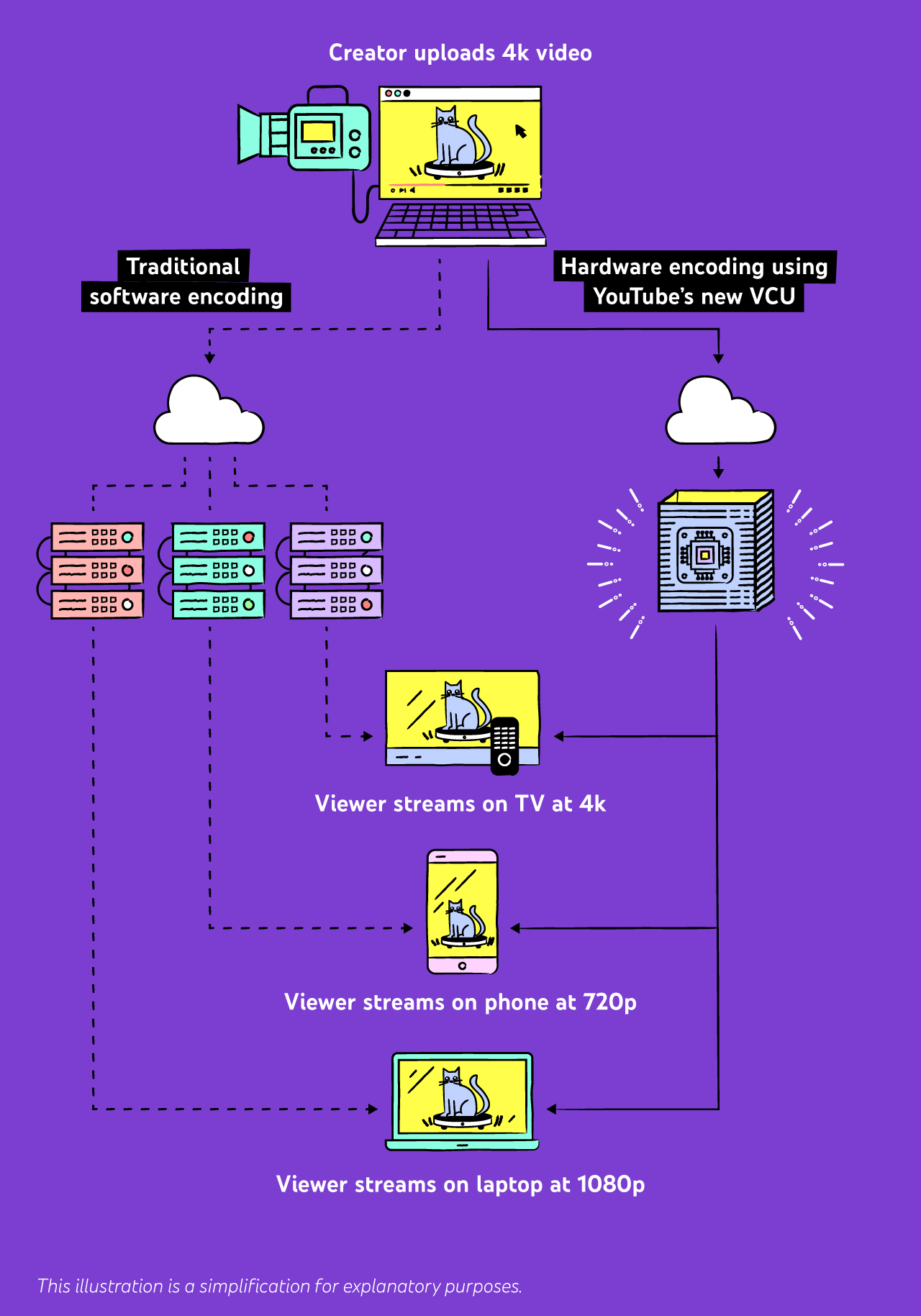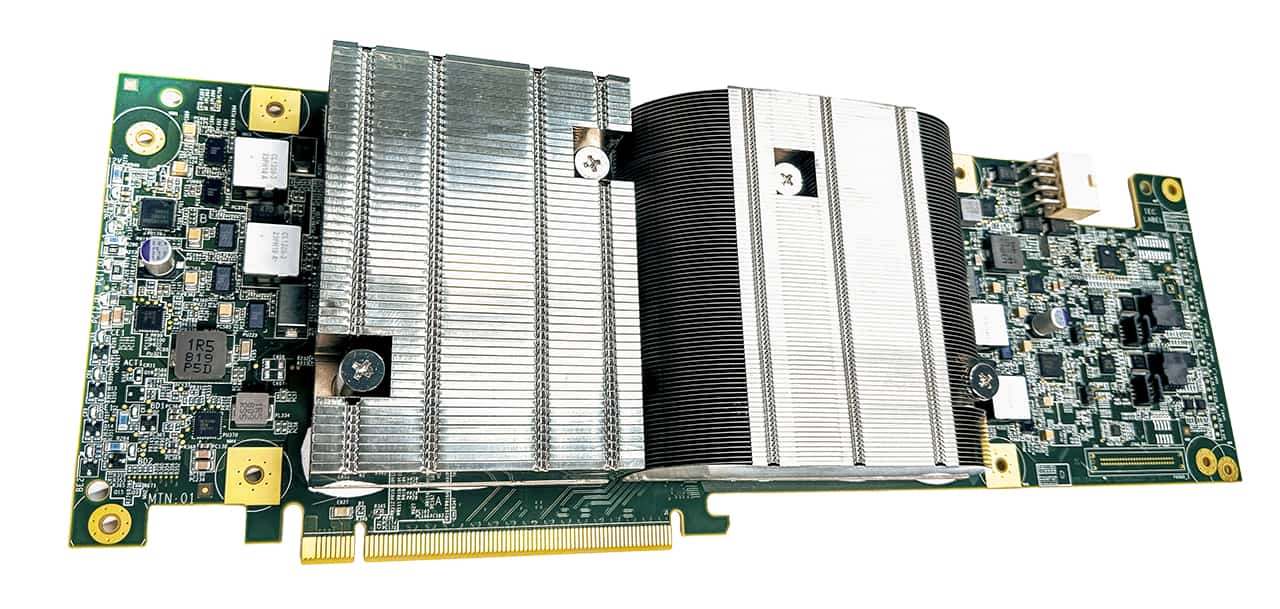YouTube is a bandwidth hog, and a huge gobbler of resources.
According to its statistics, the popular video-streaming platform has more than 2 billion users, and more than 1 billion hours watched daily.
What this means, YouTube has to do lots of transcoding.
For example, when dealing with one 8K video, YouTube needs to create nine total resolutions created from a single upload: 144p, 240p, 360p, 480p, 720p, 1080p, 1440p, 2160p, and 4320p. These are all different video files, and every one needs to be created from the original 8K uploaded file, and this is just for one users' specific device.
YouTube also needs different codecs for some of those nine resolutions. And the codecs include those that are only supported on modern devices, and other codecs dedicated for old and ancient devices.
Given by the size of YouTube, the number of its users, the number of videos is has to deal with every single second, and the many people are accessing its platform at any given moment, even before adding YouTube Live and additional workloads from Drive and Google Photos, YouTube has to deal with one of the largest transcoding job on Earth.
Such huge transcoding workload is monumental task that can burden even Google that owns YouTube.

This is why Google has decided that YouTube has to use its own server chips
The video-streaming giant has detailed what it calls its approach for "reimagining video infrastructure" in a blog post, saying that it is building a video coding unit (VCU) it calls the 'Argos' to deliver the best video quality and keep users from consuming too much data.
Google operates thousands of chips inside its data centers.
And this VCU package is a full-length PCI-E card that has an appearance that resembles an ordinary graphic card.
According to Google, the cards resemble GPUs because they are what fit in its existing accelerator trays.
And inside each board, Google embeds two Argos ASIC chips, burying them inside a huge passively-cooled aluminum heat sink. Each Argos chip has 10 "encoder cores" to process videos, adding that "all other elements are off-the-shelf IP blocks."
Google says that "each encoder core can encode 2160p in realtime, up to 60 FPS (frames per second) using three reference frames."
When a YouTube user uploads a video, it's almost certain that an Argos chip will be processing the video to transcode it, so it can be viewed by anyone across the globe.
The one biggest advantage of the Argos chips is that, it allows YouTube to process high-resolution 4K video in just hours instead of days it previously needed.
Google first detailed its Argos chips at the ASPLOS (Architectural Support for Programming Languages and Operating Systems) Conference, offering a rare glimpse into its data centers' inner workings.
"The importance of these workloads motivates larger video processing infrastructures and – with the slowing of Moore’s law – specialized hardware accelerators to deliver more computing at higher efficiencies," said YouTube in a paper for the conference.
It is said that a team of about 100 Google engineers designed the first-generation chips in 2015, said Scott Silver, the Google vice president of engineering who oversees YouTube's infrastructure. And this time, Google began phasing in its second-generation Argos chips to push video compression another step forward.
"Customers have to pay for bandwidth one way or another," Silver said. "Our goal is to make sure people can get the highest quality video on whatever device they have."

As a big company on the internet, Google in designing its own custom chip can be an important way to improve.
When using general purpose chips, platforms as huge and complex like YouTube, may experience a hard time in maximizing its potential.
By creating its own custom chips, Google push its own computing as priorities.
And in this case, Argos can lower the cost Google has to spend, in order to keep YouTube running.
Using Argos, it is also said that the TCO (total cost of ownership) of the setup is cheaper if compared to running its algorithm on Intel Skylake chips and Nvidia T4 Tensor core GPUs.
Argos were the chips that gave YouTube the ability to serve its many users during the 'COVID-19' coronavirus pandemic, where 25% more videos are being watched as people are urged to stay at home.
Google can handle the load because Argos can deal with videos 20 to 33 times more efficiently than conventional servers, when factoring in the cost to design and build the chip, employ it in Google's data centers, and paying YouTube's huge electricity and network usage bills.
Since acquiring YouTube, Google has aggressively fought to keep the platform's cost down, often by reinventing the internet infrastructure itself and dealing with copyrights in order to make that happen.
Previously, Apple has done similar by launching the ARM-based M1 processors.
With the M1, Apple can improve battery life, add an AI accelerator and other circuitry the company wanted and follow Apple's own product schedule instead of Intel's.